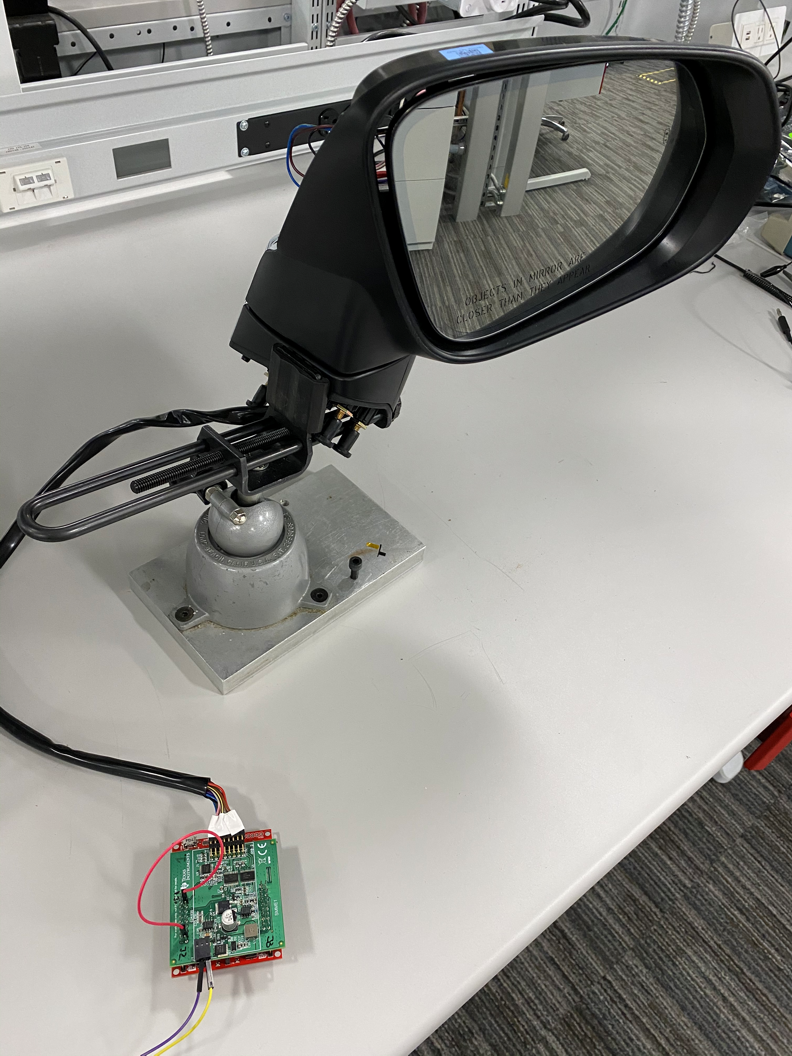TIDUES6 August 2020 – MONTH
- Description
- Resources
- Features
- Applications
- 5
- 1System Description
- 2System Overview
- 3Hardware, Software, Testing Requirements, and Test Results
- 4Design Files
- 5Software Files
- 6Related Documentation
- 7Terminology
3.2.1 Test Setup
The testing was done using the TIDA-020027 PCB and the EXP-MSP430F5529 LaunchPad. The 12-V power supply was connected to pin 1 and 2 of connector J4. A side mirror assembly equipped with X&Y direction motor, fold motor, electrochromic mirror, and defogger is connected to the TIDA board on connector J1. Figure 3-5 shows the test set up.
 Figure 3-5 TIDA-020027 Test
Set-up
Figure 3-5 TIDA-020027 Test
Set-up